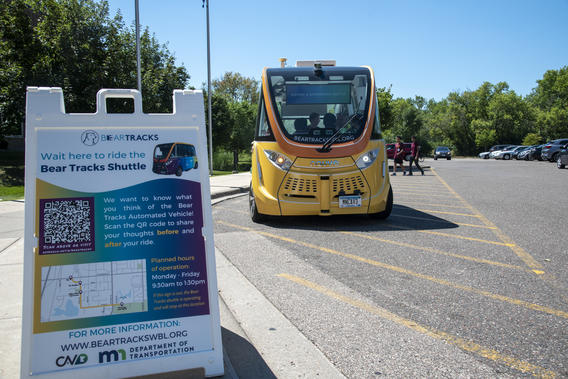
TPEC researchers are continuing to discover exciting applications from two connected and automated vehicle (CAV) pilot projects.
Final data synthesis is underway for our work pertaining to a nearly year-long project named Bear Tracks, located in White Bear Lake, MN. Bear Tracks featured an electric automated shuttle that ran along a 1.5-mile loop and serviced primarily elderly, low-income community members who experienced transportation challenges.
Researchers collected and analyzed survey data, which revealed an interest in CAV technology and an increase in positive attitude responses after riding the shuttle. In addition to overall enthusiasm, concerns were recorded from the surrounding neighbors who felt the low-speed shuttle created traffic frustrations despite the availability of an alternate route. Furthermore, a demonstration at the local high school generated active engagement from students who expressed possible travel implications and job opportunities in their future.
Although this project has concluded, researchers continue gleaning insights into the challenges and successes faced in its duration and are excited for future endeavors.
GoMARTI, the pilot project in Grand Rapids, is seeing significant traction. Fleet and route expansion is underway after officials successfully applied for federal funds and were awarded a $9.3 million ATTAIN federal grant. This is the first CAV project in Minnesota offering an on-demand service, with more than 70 pick-up and drop-off sites. Ridership has continued to grow monthly, and the service has completed more than 3,500 cumulative trips. It is anticipated this number will continue to rise with the addition of fleet vehicles.
TPEC researchers were not surprised by this success, as their research in previous studies examined how the goMARTI project could meet transportation needs in the area. Like Bear Tracks, goMARTI is available to the general public; key constituencies are people with disabilities and those who experience transportation challenges. Rider surveys also show great interest in the project, and positive-attitude responses are growing as the community becomes familiar with the service. Continuing ahead, we are looking forward to being a part of the work supported by the ATTAIN grant.